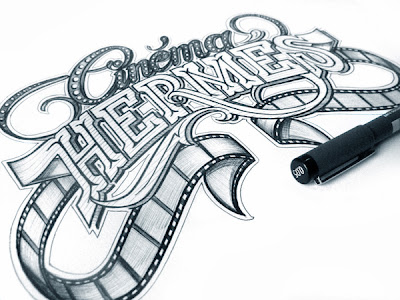Research Into Traditional Signage and Hand-rendered Typography - SECONDARY RESEARCH
by Roxxie Blackham on Saturday, 28 September 2013
Considering I wasn't at home for a lot of the summer, I thought it would be useful to research into this subject over the internet as well, as I will be able to find much better quality signage.
Facts & History About The Subject:
Signwriters design, manufacture and install signs, including advertising signs for shops, businesses and public facilities as well as signs for transport systems.
Most modern signwriters design signs with the assistance of computer-aided design (CAD) computer-directed manufacturing techniques. Historically, signwriters drew or painted signs by hand using enamel paint. The craft of signwriter on buildings sometimes still overlaps with that of painter and decorator. Permanent signage for use in shopfronts can be cut by machine or hand from acrylic or metal. Signwriting businesses may offer many different processes to present the same lettering or images in different media, such as banners, metalengraving, LED or neon signs. Signwriting for painted restaurant menus or inns might be done professionally, informally, or by visual artists.
Some signs are created with large-format printers, which may use solvent inks, ultraviolet-curable inks, water-based inks or latex inks. A recent development is UV inks, which are cured with ultraviolet light and can be printed directly onto many different substrates such as wood, metal and plastic, adhesive-backed or non-adhesive films. Adhesive-backed films are then laminated to different substrates.
Sign painting is the act of taking a specific kind of brush, and with various kinds of paint, and applying it to a 2 or 3 dimensional surfaces creating letters, forms and/or symbols.
Sign painting was/is a learned craft. It has a very long history within the realm of "artisans-crafts". Historically, apprenticeships were the means of learning the craft. Though many, in the earlier history of the craft were self-taught. An apprenticeship could last for years, depending on the skill of the apprentice and the knowledge of the "master". The skills learned were varied and some quite complex. Basically, learning to manipulate a lettering brush was the core of the learning process. This skill alone could take years to master. There were a number of associated skills and techniques also taught, such as: gold leafing (surface and glass), carving (in various mediums),glue-glass chipping, stencilling, silk-screening.
With the advent of the computer and various kinds of software now available the sign painting craft has been displaced with computer driven sign making machines. The "craft" has all but disappeared, and in only a few "technical schools" or specialty schools is the craft still taught. Such as L.A. Trade Technical College.
Sign painters are usually self-taught and/or taught by mentors in the business. This is because Sign Painting is rarely offered in schools/universities, which in turn is the reason it could considered a dying trade. However, most professional Sign Painters are quite passionate about their work: computer-generated signs are both a blessing and a curse.
- Leave your comment • Category: signage and lettering, summer brief
- Share on Twitter, Facebook, Delicious, Digg, Reddit













































